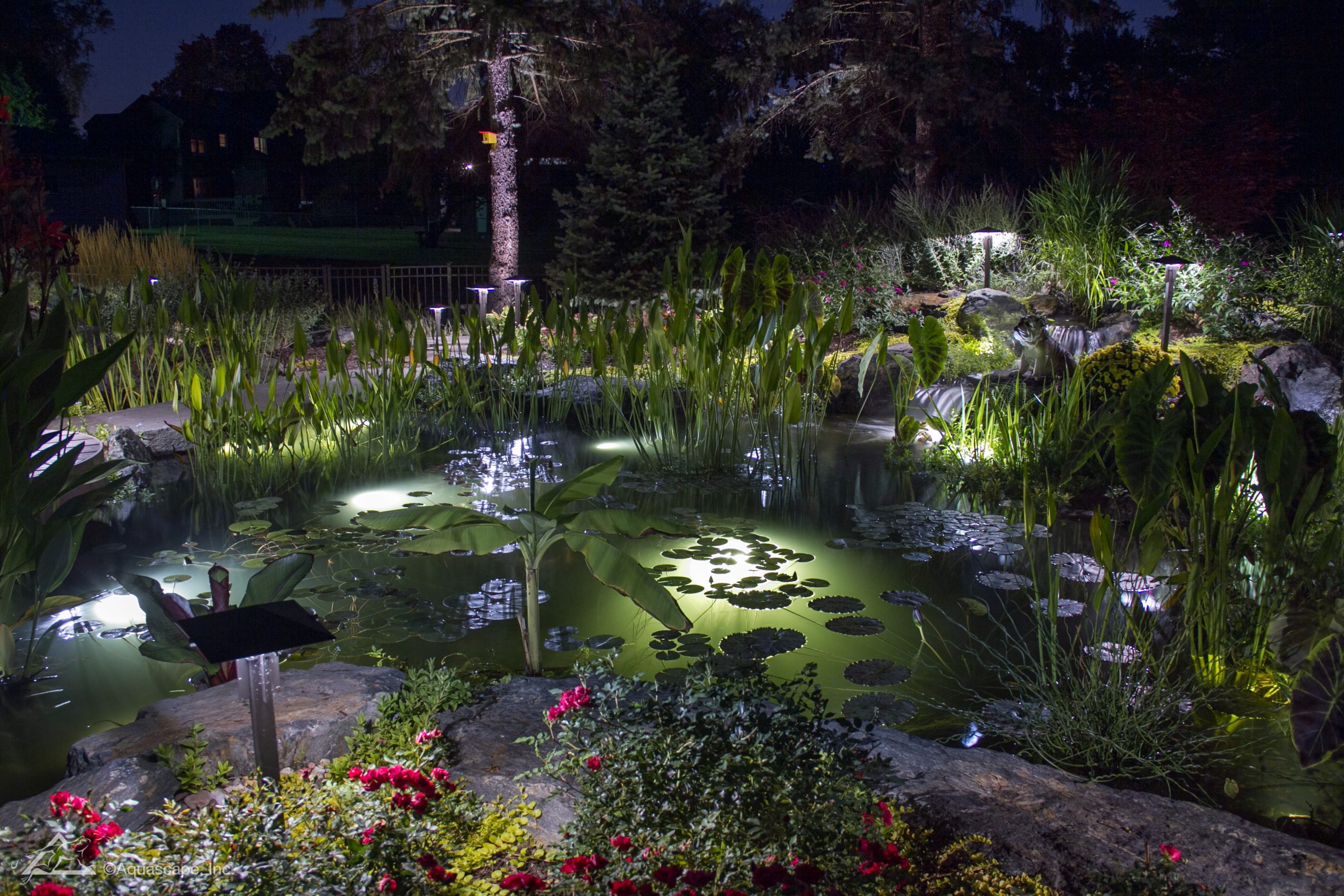
Pond Leak
Most seasoned pond owners are familiar with the trials and tribulations of pond leaks. For new pond owners, the following is for you. Unfortunately, ponds do leak from time to time. Fortunately, there is typically an easy fix. To repair the problem quickly and efficiently, it is important to understand the basic principles of identifying and fixing leaks. The steps below will help you to both locate and remedy any leaks in your pond so you can get back to enjoying your pond during these warm spring and summer months.
The Sun May be the Culprit for a Pond Leak
Before you even make an attempt at locating a pond leak, you must first consider the rate at which water evaporates in your area. For example, if you live in Phoenix, you can expect to lose up to three to five inches of water every week during the heat of summer. If you live in the Great Lakes area, you’re likely to experience just one to two inches of evaporation each week. These are fairly significant rates, so if your water level is fluctuating between these levels, it is likely just evaporation!
Step One: Low Pond Edges
If you’re losing more water in a week than what’s typical of natural evaporation in your area, then it may be time to do a little detective work as signs are pointing towards your pond having a pond leak. Luckily, leaks most often occur alongside waterfalls or stream beds and are both easily spotted and remedied. To find leaks in these areas, check alongside the waterfall or stream for wet spots in the soil or mulch. If you dig around and move some rocks from the area, you will be able to see if the water is inadvertently finding its way over the liner’s edge. If this is the case, then all you need to do is build up the edges enough to raise the liner out of the water’s reach. This can be accomplished by pushing soil, rocks, and/or gravel under the liner. If you feel this is out of your realm of comfort, you can always call your contractor and have them take care of the fix for you.
Step Two: Look Below the Pond Edge
Step one unsuccessful? Time to move onto step two in your detective process. The next place to look is the shoreline of your pond. If you have a waterfall, turn it off and keep an eye on the water level in your pond. Take note of where the water level is when it stops dropping. You can bet that the pond leak is immediately at, or just above that level. It’s possible that the water is finding its way out of your pond along the shoreline. This can happen due to plantings or foot traffic near the edges. Similar to the solution in step one, all you’ll need to do here is build up the edge with soil, rock, and/or gravel.
Step Three: Time to Check the Plumbing
If the water level dropped below the shoreline and down to a point that’s about even with the skimmer opening, then you probably have a problem with the skimmer faceplate. It’s possible that the skimmer may have not been sealed correctly. To find out, simply move a few rocks around the front of the skimmer and slide your hand behind the liner, feeling for wet soil around the opening of the skimmer. If the soil is saturated, then the faceplate may have not been installed properly and might be the source of the leak. If you are comfortable resealing your faceplate, then the fix is quick and easy! If this step sounds like gibberish to you, then it’s probably time to call your professional installer out to take a look.
Water in your biological filter draining out? Then the pond leak is almost certainly in the plumbing itself. If you built your own pond, then you may want to wrestle with fixing this type of leak on your own. On the other hand, if you hired a professional to install your water feature, it’s probably best to have them come out and fix it for you. They’ll thank you! By doing the detective work to find the leak, it will take less time for the contractor to determine where the problem lies and provide a solution.
Step Four: It’s in the Liner
Last but not least, if your water level drops below the skimmer opening, and the biological filter is not draining out, then the problem is most certainly somewhere in the liner. To find a liner leak, you’ll need to check all around the liner right at the new water level. Small tears and gouging may be covered by rocks or plantings and will need to be shuffled around to find the leak. Once found, patch up the leak like you would patch the inner tube of a bicycle tire using a pond liner patch kit. At this point, you can safely and confidently fill the pond back up, making sure to use Pond Detoxifier in order to keep your fish from being adversely affected by the tap water.
Pond = Restored
All it takes is a little bit of methodical detective work and elbow grease to determine the location of your pond leak and execute a solution. No matter what stage you find your leak, the question remains the same, do you want to fix it yourself or hire a pond pro to resolve the problem for you?
Don’t forget, most leaks occur around edges, whether it be a waterfall, stream, or pond. These leaks can be quickly and easily remedied so you can get back to enjoying your pond and its inhabitants during the warm, beautiful spring and summer months. Contact us for more information.
